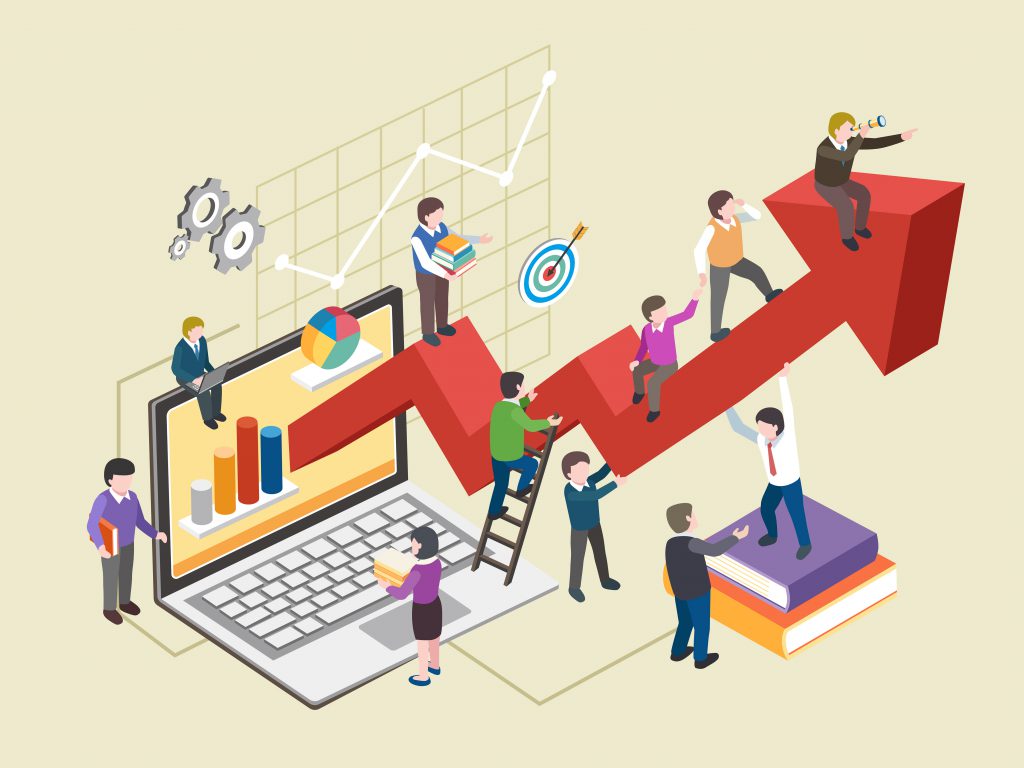The new era of advanced analytics: get to know and retain your customers
The globalised economy demands maximum competitiveness from all companies. Managing information is more important than ever, which can become a differential factor to be successful against the competition. This information is obtained after a search in the data repositories, and helps to make decisions based on reliable and accurate information. In other words, taking advantage of data is essential so that companies have an in-depth knowledge of their customers, increase their satisfaction and their retention rate.

The data that companies collect comes from multiple sources (ERP, CRM, Google Analytics, social networks, e-commerce, loyalty cards, etc. ). Among this data, the information associated with a company’s customers is of great importance: experience shows it is easier to retain an existing customer than attract a new one.
This information-gathering about customers, its analysis and exploitation are the foundations of what we know as Customer Analytics.
Customer Analytics: “Give me customer data and I will boost your business”
What do we mean by Customer Analytics?
In the Greek classic, the scholar Archimedes coined a phrase that went down in history: “Give me a place to stand and I will move the world”. With it, he explained a principle of physics in a simple and easy way that enabled the movement of large volumes without the need to apply great effort. If we take this maxim and apply it to the world of business management, we can say that Customer Analytics is one of the most important levers for businesses to be successful, based on the optimisation of the management of their customers. Let’s try and explain why and how.
Firstly, let’s explain the concept of Customer Analytics in more detail: it is a technique that breaks down large problems into manageable answers.
In other words: when companies need to know how their customers behave, individually or as a whole, customer analytics deciphers their actions so they are easier to understand. That way, companies can make better commercial decisions about pricing, offers and management. According to McKinsey, “companies that use Customer Analytics comprehensively report outstripping their competition in terms of profit almost twice as often as companies that do not”.
How does Customer Analytics help?
The tools that enable analytical processes to be carried out of data belonging to organisations’ customers have the ability to offer precise answers about any process that can be quantified or monitored.
For example, customer analytics software provides us with precise information about the commercial channels with the highest success rate when it comes to providing new customers, and even to find out exactly which phases of the sales process a lead has followed until it qualifies, or even until it becomes a customer.
It also allows us to find out which type of customer and which channels are the most profitable, enabling us to focus our commercial efforts.
And that isn’t all: in terms of loyalty, it reveals the gaps where customers abandon a purchase and even the reasons they make this decision (with this information it is possible to design and implement actions that counteract this abandonment.
Finally, it shows us the behavioural habits of the profile of customers that are most loyal to our organisation.
How to implement customer analytics?
In order to implement customer analytics and obtain useful information, companies must:
- Capture, store and organise their data.
- Analyse and make decisions using this data.
To capture and use the data, companies must collect a lot of it. They can carry out surveys, research users, purchase data from third parties and, if they offer a technological solution, passively collect data through the use of their website or application.
- Websites: most customer analytics platforms passively collect all of the data from visitors.
- Applications: companies may need to define activities or “events” where data is collected, such as when logging in, logging out and user actions.
To store data, it is useful to have a central repository that brings together all of the data sources in one overview of their customer. This is a key feature of most customer analytics platforms.
Analyse your customers with Intelligence Partner and Google tools
Here at Intelligence Partner, we focus on taking advantage of the data to develop marketing and optimisation strategies of one of the most relevant sales channels for companies, ecommerce.
Our experts advise us:
- To get to know website users. With all of Google Analytics’ potential, and bringing together information from other sources (SAP, CRM, second and third party data, etc.), it is easy to discover and improve the conversion funnel of a company’s website.
- To develop a predictive analytical model with Machine Learning and BigQuery techniques. Thanks to this, it is possible to predict customer behaviour and classify them according to their probability of future purchases.
- To exploit and view data. A modern BI platform like Looker enables us to integrate the analysis into business processes quickly in the creation of analysis and data discovery.
If you would like more information, we invite you to watch the video of our webinar “Really get to know your customers with Google’s advanced analytics”. In the video, you can see our technicians and other experts showing you the possibilities of Google’s business tools to carry out advanced analytics processes on a company’s installed base:
Would you like to find out more or see how you can carry out Customer Analytics actions in your company? Get in touch with us: together we will find out which is the best way for you to really get to know your customers thanks to technology.


